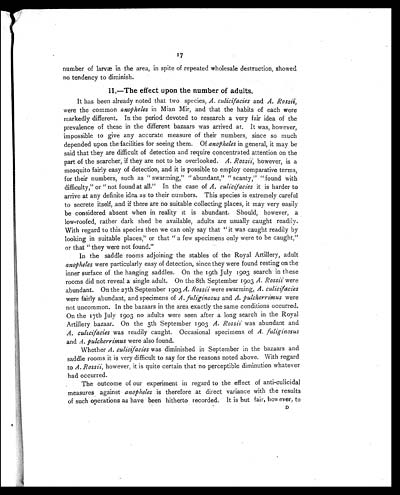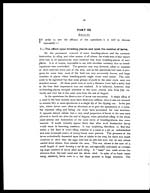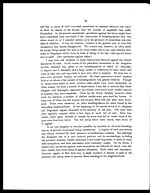Medicine - Institutions > Army health reports and medical documents > Scientific memoirs by officers of the Medical and Sanitary Departments of the Government of India > Number 9 - Second report of the anti-malarial operations at Mian Mir, 1901-1903 > Part III - Results
(25) Page 17
Download files
Individual page:
Thumbnail gallery: Grid view | List view

17
number of larvæ in the area, in spite of repeated wholesale destruction, showed
no tendency to diminish.
II.—The effect upon the number of adults.
It has been already noted that two species, A. culicifacies and A. Rossii,
were the common anopheles in Mian Mir, and that the habits of each were
markedly different. In the period devoted to research a very fair idea of the
prevalence of these in the different bazaars was arrived at. It was, however,
impossible to give any accurate measure of their numbers, since so much
depended upon the facilities for seeing them. Of anopheles in general, it may be
said that they are difficult of detection and require concentrated attention on the
part of the searcher, if they are not to be overlooked. A. Rossii, however, is a
mosquito fairly easy of detection, and it is possible to employ comparative terms,
for their numbers, such as " swarming," " abundant," "scanty," " found with
difficulty," or " not found at all." In the case of A. culicifacies it is harder to
arrive at any definite idea as to their numbers. This species is extremely careful
to secrete itself, and if there are no suitable collecting places, it may very easily
be considered absent when in reality it is abundant. Should, however, a
low-roofed, rather dark shed be available, adults are usually caught readily.
With regard to this species then we can only say that "it was caught readily by
looking in suitable places," or that " a few specimens only were to be caught,"
or that " they were not found."
In the saddle rooms adjoining the stables of the Royal Artillery, adult
anopheles were particularly easy of detection, since they were found resting on the
inner surface of the hanging saddles. On the 19th July 1903 search in these
rooms did not reveal a single adult. On the 8th September 1903 A. Rossii were
abundant. On the 27th September 1903 A. Rossii were swarming, A. culicifacies
were fairly abundant, and specimens of A. fuliginosus and A. pulcherrimus were
not uncommon. In the bazaars in the area exactly the same conditions occurred.
On the 17th July 1903 no adults were seen after a long search in the Royal
Artillery bazaar. On the 5th September 1903 A. Rossii was abundant and
A. culicifacies was readily caught. Occasional specimens of A. fuliginosus
and A. pulcherrimus were also found.
Whether A. culicifacies was diminished in September in the bazaars and
saddle rooms it is very difficult to say for the reasons noted above. With regard
to A. Rossii, however, it is quite certain that no perceptible diminution whatever
had occurred.
The outcome of our experiment in regard to the effect of anti-culicidal
measures against anopheles is therefore at direct variance with the results
of such operations as have been hitherto recorded. It is hut fair, however, to
D
Set display mode to: Large image | Zoom image | Transcription
Images and transcriptions on this page, including medium image downloads, may be used under the Creative Commons Attribution 4.0 International Licence unless otherwise stated. ![]()
| Permanent URL | https://digital.nls.uk/75026272 |
|---|




